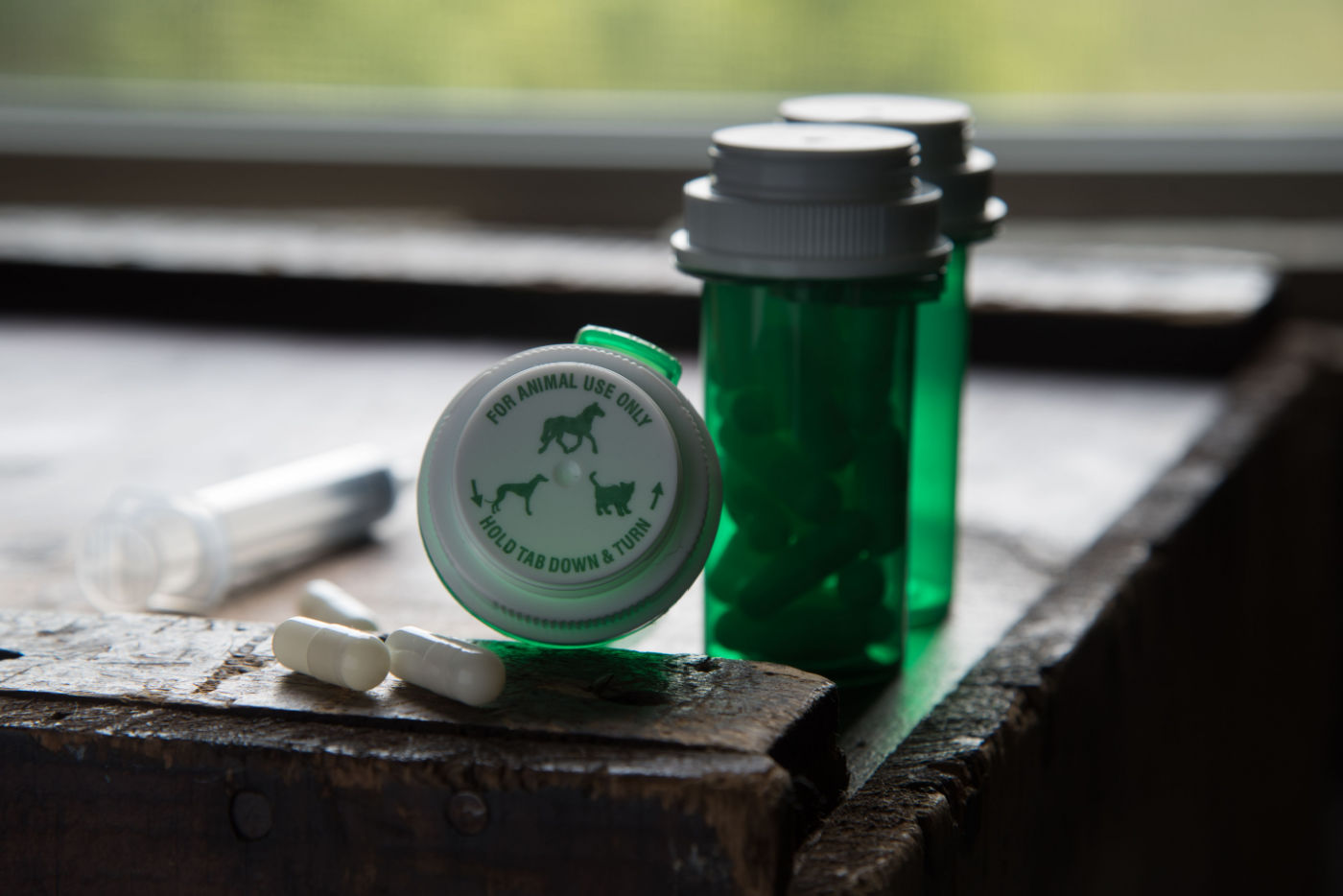Equine gastric ulcer syndrome (EGUS) has become a commonly diagnosed condition among riding horses. Prevalence in adult horses has been reported to range between 55-100% with performance horses. EGUS has also been widely reported in foals, leisure horses and even brood mares . To ensure rapid and accurate treatment, the accurate diagnosis of EGUS is critical.
The SUCCEED FBT can help improve both the accuracy and speed of the veterinarian’s diagnosis of gastric ulcers.
Common Diagnostic Methods for EGUS and Their Limitations
Diagnosis of gastric ulceration is predominantly achieved using two techniques:
- Gastroscopy using a 3-meter endoscope
- Treatment strategies based on clinical symptoms.
However these techniques pose some limitations. Not all vets have access to a 3-meter endoscope and may therefore need to refer. Also, the procedure itself is both costly to the owner and invasive to the horse, involving a period of fasting and then sedation for the gastroscopy
Implementing treatments based on incorrect assessments can lead to a prolonging of symptoms and potential deterioration in the condition of the patient, in addition to the obvious cost implications. This can be further complicated by the diverse range and severity of symptoms and clinical signs of EGUS.
In general, declines in performance, weight loss and/or poor condition have been cited as the most common symptoms of EGUS. Clearly these clinical signs can be indicative of a wide range of conditions, and it is not uncommon for horses with EGUS to even be completely asymptomatic.
As a result of these limitations, there is a real possibility that misdiagnosis or under-diagnosis can occur, not only for EGUS but other GI tract conditions presenting with these symptoms, including colonic ulceration.
Another Possibility – EGUS with Colonic Ulceration
Colonic ulceration has been shown to frequently occur in horses with EGUS, indeed Pellegrini found that in over 500 horses necropsied up to 54% of them demonstrated both colonic and gastric ulceration. In addition, many symptoms previously deemed characteristic of gastric ulcers, such as colic and girthiness, are more likely representative of colonic ulceration.
Gastric and colonic ulceration require contrasting treatments, which, if not appropriately prescribed/administered, can actually exacerbate lesions. This raises the importance of accuracy in diagnosis and, in particular, the ability of the practitioner to differentiate foregut from hindgut ulceration.
The SUCCEED FBT is not an ulcer test. However, it does facilitate the differential diagnosis of pathological conditions of the GI tract. This, in turn, enables the veterinarian to implement further diagnostic procedures if necessary for an accurate, comprehensive and effective treatment plan.
How the SUCCEED FBT Helps in Diagnosing Gastric Ulceration
Severe gastric ulcers, characterized by bleeding in the foregut, may be strongly suspected by the following FBT results.
- Test H positive/Test A negative – bleeding present in the foregut but absent in the hindgut
- Test H positive/Test A positive – bleeding present in the hindgut and possibly also in the foregut
The FBT thereby allows the practitioner to quickly locate the source of a blood loss and proceed in confidence with subsequent tests, such as gastroscopy, and/or treatments. This can save time, cost and risk to the horse. The test can also be easily administered at set intervals to continually assess the effectiveness of treatment, and post recovery for early warning of any re-lapse.
To purchase the FBT, contact your veterinary supply distributor. For more information on using the FBT for the diagnosis of EGUS and colonic ulcers download the FBT information sheet or contact Freedom Health.
References
- Murray, M.J., Grodinski, C., Anderson, C.W., Radue, P.F., Schmidt, G.R. (1989) Gastric ulcers in horses: a comparison of endoskopic findings in horses with and without clinical signs. Equine Vet J, 7: 68-72
- Johnson, B., Carlson, G.P., Vatistas, N., Snyder, J.R., Lloyd, K., Koobs, J. (1994) Investigation of the number and location of gastric ulcerations in horses in race training submitted to the California racehorse postmortem program. In Proceedings: Am Assoc Equine Pract, 123-124
- Murray, M.J., Schusser, G.F., Pipers, F.S., Gross, S.J. (1996) Factors associated with Gastric lesions in Thouroughbred racehorses. Equine Vet J, 28: 368-374
- Nieto, J.E., Snyder, J.R., Beldomenico, P., Aleman, M., Kerr, J.W., Spier, S.J. (2004) Prevalence of gastric ulcers in endurance horses – a preliminary report. Vet J, 167 (1): 33-37
- Vatistas, N.J., Snyder, J.R., Carlson, G., Johnson, B., Arthur, R.M., Thurmond, M., Zhou, H., Lloyd, K.L. (1994) Epidemiological study of Gastric ulceration in the Thoroughbred race horse: 202 horses (1992-1993). In Proceedings: Am Assoc Equine Pract: 125-126
- Le Jeune, S.S., Nieto, J.E., Dechant, J.E., Snyder, J.R. (2006) Prevalence of gastric ulcers in Thoroughbred broodmares in pasture. Proc Am Assoc Equine Pract, 52:264.
- Elfenbein, J.R., Sanchez, L.C. (2012) Prevalence of gastric and duodenal ulceration in 691 nonsurviving foals (1995-2006).Equine Vet J Suppl. (41):76-9.
- Mitchell, R.D. (2001) Prevalence of gastric ulcers in hunter/jumper and dressage horses evaluated for poor performance. In: Proceedings of the Association of Equine Sports Medicine Annual Meeting 2001.
- Pellegrini, F.L. (2005) Results of a large-scale necroscopic study of equine colonic ulcers JEVS. 25 (3),113-117




